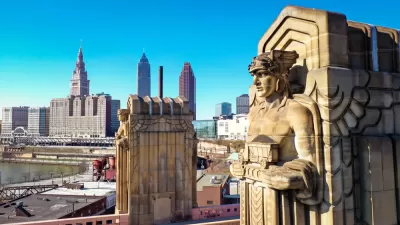Washington, D.C. was an early adopter of Vision Zero in the United States, but eventually it became emblematic of the country's lack of progress in reducing traffic collisions.

Vision Zero programs all over the country and world set goals to eliminate traffic fatalities for all road users—from drivers to pedestrians to people on bikes—but in the United States they have yet to find much success. Traffic collisions and fatalities continue to rise, even during the low-driving years of the pandemic.
Washington D.C.'s Vision Zero program has, for better or worse, has exemplified the shortcomings of Vision Zero in the United States. Lofty ambitions, best intentions, soundbites from politicians, and the high hopes from advocates have yet to produce results. Planetizen has cited D.C. example as an example of what not to do to achieve Vision Zero since 2015, the year of the plan's adoption. With 40 traffic-related deaths in 2021, the District has its deadliest year on the roads since 2007—just three years before Vision Zero had intended to eliminate all traffic fatalities.
The nation's capital recently went back to the drawing board, reports Callan Tansill-Suddath for DCist, updating its Vision Zero ordinance with a new plan for eliminating traffic fatalities. "The update includes information on the status of the plan since its initial implementation in 2015 and data on factors such as traffic deaths in D.C. compared to other cities, and fatality rates by ward. It also highlights how Vision Zero will be updated in an effort to eventually reach the goal of zero traffic deaths," according to the article.
While the plan focuses on equity, recognizing worse traffic safety outcomes in wards 7 and 8, the District will rely on a heavier police presence to deter speeders. More details on the revamped approach to Vision Zero in D.C. can be read at the source article below.
FULL STORY: D.C. Revamps Vision Zero Effort

Planetizen Federal Action Tracker
A weekly monitor of how Trump’s orders and actions are impacting planners and planning in America.

Maui's Vacation Rental Debate Turns Ugly
Verbal attacks, misinformation campaigns and fistfights plague a high-stakes debate to convert thousands of vacation rentals into long-term housing.

Restaurant Patios Were a Pandemic Win — Why Were They so Hard to Keep?
Social distancing requirements and changes in travel patterns prompted cities to pilot new uses for street and sidewalk space. Then it got complicated.

In California Battle of Housing vs. Environment, Housing Just Won
A new state law significantly limits the power of CEQA, an environmental review law that served as a powerful tool for blocking new development.

Boulder Eliminates Parking Minimums Citywide
Officials estimate the cost of building a single underground parking space at up to $100,000.

Orange County, Florida Adopts Largest US “Sprawl Repair” Code
The ‘Orange Code’ seeks to rectify decades of sprawl-inducing, car-oriented development.
Urban Design for Planners 1: Software Tools
This six-course series explores essential urban design concepts using open source software and equips planners with the tools they need to participate fully in the urban design process.
Planning for Universal Design
Learn the tools for implementing Universal Design in planning regulations.
Heyer Gruel & Associates PA
JM Goldson LLC
Custer County Colorado
City of Camden Redevelopment Agency
City of Astoria
Transportation Research & Education Center (TREC) at Portland State University
Jefferson Parish Government
Camden Redevelopment Agency
City of Claremont





























